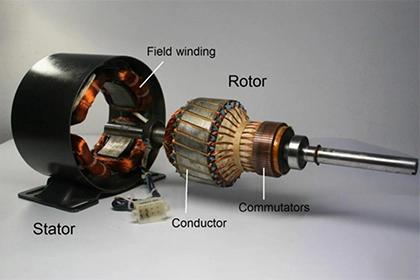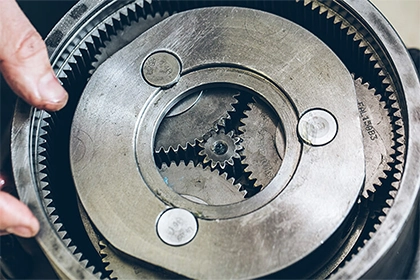
How to convert 3 phase induction motor to generator?
If you want an induction motor to self-excite as a generator you need to connect a sufficient capacitor across one or more of the windings then drive the motor at or above synchronous speed and it will self-excite and be ready to deliver power to loads.
Converting a 3-phase induction motor into a generator can be a useful project for those who have a need for a portable power source or who want to experiment with generating electricity. While it may seem like a daunting task, the process is actually quite straightforward and can be accomplished with just a few basic tools and some basic electrical knowledge.
Before we get started, it's important to note that there are a few key differences between an induction motor and a generator. An induction motor uses electrical current to create mechanical energy, while a generator uses mechanical energy to create electrical current. This means that in order to convert an induction motor into a generator, we will need to provide the motor with a mechanical input in order to generate electricity.
With that said, let's take a look at the steps involved in converting a 3-phase induction motor into a generator:
-
Gather the necessary tools and materials. You will need a three-phase induction motor , a DC power supply, a voltmeter, a multimeter, and some wire. You may also need a few additional tools, depending on the specific motor you are using and the type of mechanical input you will be providing.
-
Test the motor to ensure that it is in good working condition. To do this, connect the motor to a power source and verify that it is able to rotate smoothly and without any unusual noises or vibrations.
-
Disconnect the motor from the power source and remove any external loads that may be attached to it. This will ensure that the motor is able to rotate freely when it is being used as a generator.
-
Locate the stator windings on the motor. These are the large wires that provide electrical power to the rotor.
-
Using a multimeter, measure the resistance of the stator windings. This will help you determine the correct wiring configuration for the generator.
-
Connect the stator windings to the DC power supply. This will provide the necessary mechanical input to the motor and allow it to generate electricity.
-
Using a voltmeter, measure the voltage being generated by the motor. This will help you determine the efficiency of the generator and identify any potential issues.
-
Adjust the mechanical input and wiring configuration as needed to optimize the performance of the generator. This may involve changing the speed of the motor, adjusting the wiring configuration, or adding additional windings to the stator.
-
Once the generator is operating efficiently, you can use it to power electrical devices or to charge batteries.
In conclusion, converting a 3-phase induction motor into a generator is a relatively simple process that can be accomplished with just a few basic tools and some basic electrical knowledge. By providing the motor with a mechanical input and adjusting the wiring configuration, you can create a portable power source that is capable of generating electricity. With a little practice and experimentation, you can optimize the performance of your generator and use it to power a wide range of electrical devices.



Leave a Comment